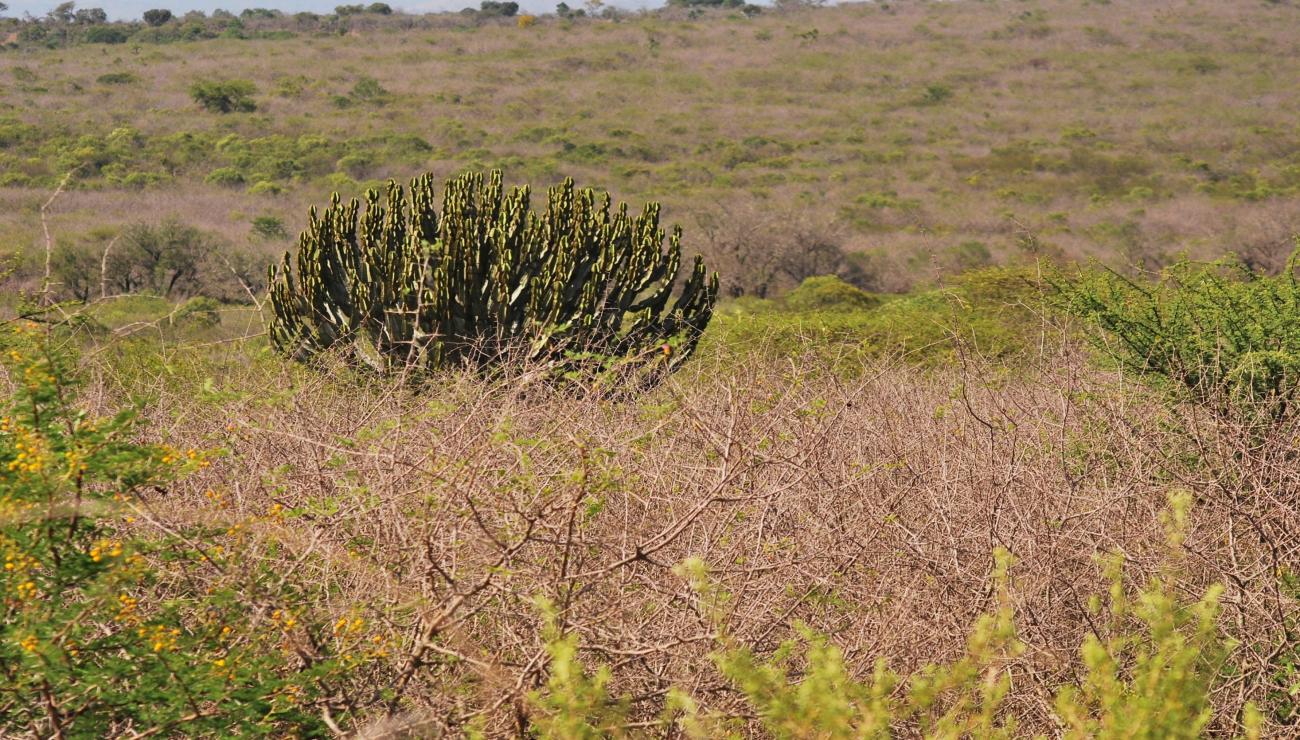Damage to ecosystems as a result of climate change has seen a marked decline in bird species. The main factor being the surge in trees, which are thriving due to our carbon heavy lifestyle.
While some may not see an abundance of new trees as a negative impact, this increase in the density of indigenous trees in savannas, grasslands and woodlands is seeing a fall in bird species.
Here the increasing tree number is driven by rising Co2 and changing landuse. As the tree number increases they shade out grass further reducing the grass and benefiting trees.
Co-author of the report in Global Change Biology, Dr Nicola Stevens, is Research Fellow, at the Environmental Change Institute (ECI) at the University of Oxford and also Visiting Researcher at the School of Animal, Plant and Environmental Sciences, at the University of the Witwatersrand, in South Africa. She said:
It is effectively spelling the end of savannas and grasslands. When this happens the biodiversity that thrives in savannas and grasslands begins to suffer – not just birds, but also animals that need open areas like wildebeest and cheetah. It’s also very negative for ecosystem services like grazing. The increased number of trees mean animals use more water – so it’s also very negative for water supplies.”
Researchers studying woody plant encroachment found that the increase in abundance of indigenous woody plants, such as shrubs and bushes, at the expense of herbaceous plants, grasses and forbs, in grasslands and shrublands, is resulting in a 20% decline in bird populations.
Dr Stevens added:
The increase in woody cover is a major global change symptom, shifting the composition, structure, and function of plants with associated effects on all biodiversity.
We studied birds as they are excellent indicators of changes in biodiversity. From our research we expected the woody cover to impact birds across certain groups more negatively than others.
However, counter to this expectation, we found a very broad range of bird groups were negatively impacted by woody encroachment. In fact, the impact of woody plant encroachment likely requires a more detailed understanding of birds' foraging behaviours and prey habitat requirements to untangle the direct mechanisms.”

Kruger National Park
They found that 80% of the areas studied showed a notable increase in woody plant cover, which is having a concerning negative impact on bird population trends. They identified that over the space of the study 63% of bird species studies are experiencing declining population trends, with 20% of the ‘losers’ exhibiting declines due to increasing woody cover. The species are losing good quality habitat as encroachment degrades and fragments grasslands and savannas.
Dr Stevens adds:
With most of the region experiencing increases in woody cover, we can expect further major declines in some species in as little as 20 years under a business-as-usual scenario. These findings draw urgent attention to the importance of monitoring the impacts of steady land cover change across the world's grassy eco- systems, in addition to land use or climate change, and designing active restoration initiatives to address the impacts on biodiversity.”
Their research found that the impacts of woody plant encroachment on populations are complex, with species impacted at different time scales.
Dr Stevens said: “We predict that the Tawny eagle, already globally listed as vulnerable (Birdlife International, 2021), may lose a further 50% of its regional occupancy within 20 years if woody plant encroachment continues unabated. Many species, such as Wing-snapping cisticola, are already at the extreme end of their tolerance for woody cover and their regional occupancy will continue to be at risk with further encroachment.”
The time scales at which species are predicted to decline depends on current woody cover across their range and the shape of their occupancy response curves to woody cover. Dr Stevens concluded:
Traditional conservation efforts have focused on land use changes and climate impacts, but this study highlights the critical need to also consider the steady encroachment of woody plants in untransformed open ecosystems. Active restoration and monitoring are essential to mitigate the adverse effects on biodiversity’.
The researchers are concerned that in the rush to respond to climate change and biodiversity loss there is increasing emphasis on tree planting as a mitigation measure, often focused in open grassy ecosystems. They say such measures will only intensify the negative responses shown by their study, by further woodifying grass-dominated ecosystems. Dr Stevens said: “Our study serves as an important reminder that increasing aboveground woody biomass, through encroachment or afforestation, may lead to trade-offs in biodiversity.”
They are calling for better management of woody plant encroachment through targeted clearing, fire regimes or grazing.
In addition, they say conservation efforts need to manage the complexity of balancing open ecosystems where species may either benefit or lose out due to woody plant encroachment. If the global commitments of halting biodiversity loss, and restoring and conserving up to 30% of terrestrial areas by 2030 are to be realised, significant intervention needs to be directed to the rangelands and near-natural lands outside of protected areas where degradation threatens ecosystems and species.
Read the article in full: Woody plant encroachment drives population declines in 20% of common open ecosystem bird species

